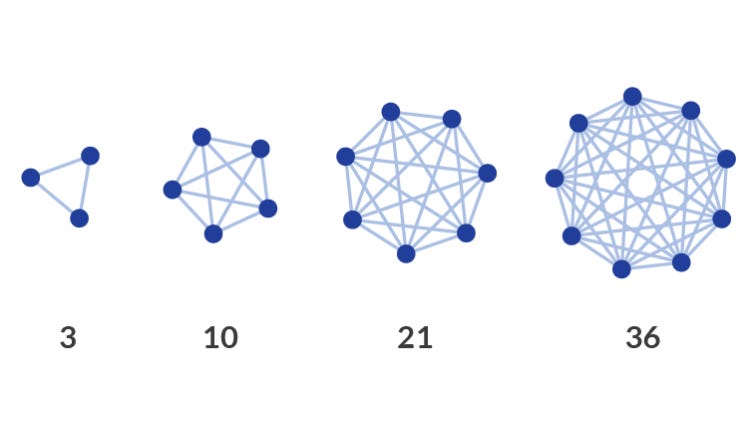An Avalanche of Adoption
Outlook, developments, and opportunities in the Avalanche (AVAX) ecosystem
In 1995, the Internet had 16 Million users. By March 2000, when the DotCom Bubble burst, it had 300 Million users. In 2005, it had 1 Billion users.
By 2005 that Internet was more than 62 times more valuable than it had been 10 years prior in 1995. According to Metcalfe’s law, networks become exponentially more valuable as people join them.
Imagine if you could have invested in core infrastructure that was fundamental to the Internet. What ROI would http and email have yielded in that time period? These sorts of networks become more valuable in a way that defies traditional growth models.
Crypto is the Internet of Finance and the Internet of Value. What the original Internet did for communication, crypto can do for how we store, share, and transfer value.
Past crypto cycles had in issue in that the vast majority of apps were based on speculation:
Exchanges (centralized and decentralized) were primarily for betting on coins that people thought would go up in price
Lending markets were largely used to take levered positions on the market or to borrow against other crypto that had already appreciated in value
And, while the frenzy of activity from on-chain crypto traders was good to bring in capital and stress-test infrastructure, it isn’t a replacement for real on-chain businesses. Over the past few years, infrastructure and tooling has been built that will allow the first generation of non-speculative, on-chain businesses to be built and scaled.
One network who has made infrastructure that will enable this flourishing of on-chain businesses is Avalanche. And the results of this are starting to show fruit.
Avalanche first gained traction in 2021, with its C-Chain acting as a cheaper, Ethereum-compatible alternative. For those who weren’t around back then, this was before Layer 2s had been rolled out. But Avalanche is much more than that. It’s a network of Subnets, which function as their own chains, with customized execution environments.
The Avalanche C-Chain, the best-known of these subnets (and what most people think of when they think of Avalanche), is a general-purpose EVM chain. Other subnets could be permissioned, optimized for gaming, or use an alternative virtual machine like the Solana Virtual Machine or a Move-based virtual machine.
This ability to adopt different virtual machines allows developers from a variety of networks to deploy on Avalanche and ensures that Avalanche can adapt as new execution environments gain traction. And subnets have been around since the last bull run, but the technology for deploying and using them has gotten significantly better since then.
In this article, I’ll go through how Avalanche is onboarding applications with real-world uses and making it easy for developers to deploy their own custom subnets:
Software toolkits for rapidly building custom virtual machines and deploying subnets
Games deploying on Avalanche, with the promise of bringing real users that are motivated by entertainment rather than speculation
Institutions deploying their own custom subnets, bringing financial activity on-chain
Read on to learn more…
Keep reading with a 7-day free trial
Subscribe to Dynamo DeFi to keep reading this post and get 7 days of free access to the full post archives.





